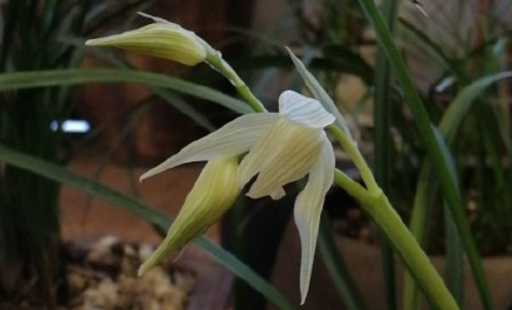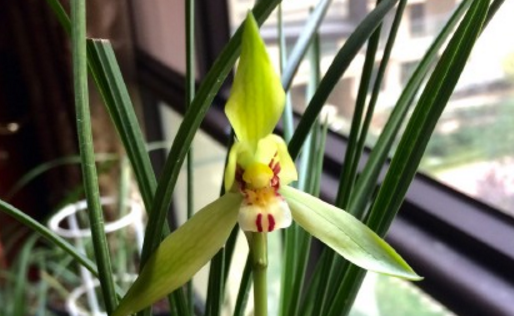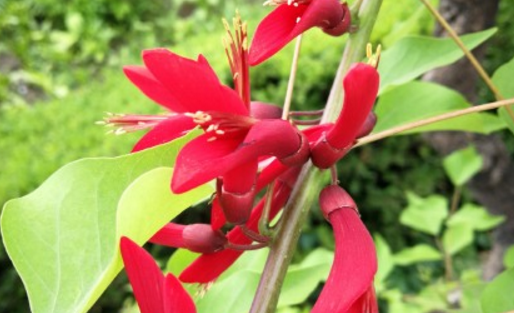Is the lotus petal orchid belongs to the big snow element culture method and matters needing attention? What if the leaves turn yellow? What's the difference between Chunlan and Chunlan?
Da Xue Su, commonly known as Da Suxin, also known as New Year's Day, because of its wide leaves, also known as wide leaf Suxin, so the breeding methods and points for attention of Da Xue Su? What if the leaves turn yellow? What's the difference between Chunlan and Chunlan? According to information, Da Xue Su likes a warm and humid environment, with no severe cold in winter and no heat in summer. Like humus-rich soil, the air humidity is relatively high. The demand for light is not high.

First, the breeding methods and matters needing attention of Da Xue Su?
Temperature and light
The suitable temperature for the growth of Daxue is between 15 and 28 ℃, and the temperature in winter is not lower than 0 ℃. It is generally safe to survive the winter. When the temperature is more than 30 ℃ in summer, it is necessary to prevent heat and cool down, and the maximum temperature should not be higher than 35 ℃.
The growth environment of Daxue is more hidden, therefore, the requirement of light is not high, it likes shade, and the light is slightly weaker in the growing period. If there is less light, the luster of the leaves will be better.
Humidity requirement
The humidity requirements of heavy snow mainly refer to two aspects: air humidity and basin soil humidity.
The humidity requirement of Da Xue Su to the basin soil is similar to that of other orchids, which requires that it should be "moist mainly and properly dry".
Daxue requires higher air humidity than other orchids, keeping it at 60%-80%. However, it still needs a better ventilation environment, and special attention should be paid to deal with this contradiction when cultivating snow element, not only to create conditions to increase air humidity, but also to strengthen the ventilation of the cultivation environment.
Soil requirement
Daxue is native to the humus-rich loam. When planting Daxue, the soil generally has humus-rich soil. The soil should be rich in humus and be mixed with some organic substances such as bark, leaves, peanut shells, etc., and the amount of these organic compounds should not be less than 30%.
Fertilizer application
Daxue is relatively fond of fertilizer, so it is necessary to apply more fertilizer in the peak growth period. if the soil is fertile, you can reduce the amount of fertilizer and apply some foliar fertilizer. Plant fertilizer cannot be used directly, it must be fermented before it can be applied.
Be careful not to apply too much fertilizer frequently.
Note:
Reproduction method
Xue Su propagates in the way of individual seedlings.
Other considerations
The growth of Daxuesu should follow its natural law and should not be eager for quick success and quick profit.
Maintain the humidity of the air and pay attention to the humidity of the basin soil.
The growing environment of Daxuesu is relatively humid, so we should pay attention to daily insecticide and sterilization to prevent and control diseases and insect pests.
Second, what if the leaves turn yellow?
Pruning
Generally, the leaves caused by normal metabolism are yellowed, so there is no need to worry, just prune the yellowed leaves to keep the appearance of Da Xue Su beautiful.
Pay attention to water control and ventilation
In the normal growth of large snow element, we should pay attention to control watering and ventilation, so as to avoid diseases caused by excessive air humidity and leaf yellow.
adequate manuring
Control the amount and frequency of fertilization, apply fertilizer thinly, and replenish the missing elements in time. The phenomenon of yellowing of leaves due to improper fertilization can be removed from the soil to the basin, replaced with a new culture soil, and the big snow can be replanted. Water the replanted snow once, pour it thoroughly and put the seedlings in a semi-shady place to slow the seedlings. After its growth resumes, thin liquid fertilizer or compound chemical fertilizer is applied.
Third, what is the difference between Chunlan and Chunlan?
1. The difference between Da Xue Su and Chunlan
The leaves of Da Xue Su and Chunlan are very similar in appearance. But there are obvious differences.
The cotyledons of Daxue are green in color, with leaves between 50-70CM in length and about 1-1.3CM in width. A plant can cluster leaves in 5 to 7 leaves, which are arched and half-drooping.
The leaves of Chunlan are similar to those of Xue Su. The leaves are clustered, the leaves are narrow and sharp, the edges are rough and serrate. The leaves of Cymbidium are generally 4-6 gathered together, 20-60cm long, a few up to 100cm, 0.6-1.1cm wide.
Compared with the two, it can be seen that the leaves of Daxue are bigger and thicker.
2. The flower of the difference between Da Xue Su and Chunlan
The flowers of Da Xue Su and Chunlan are very different, which is a good sign of distinction.
The flowers of Daxue Su and Chunlan also have three petals standing in three directions, just like a small fan. Labellum shorter than petals, apex revolute. The difference is the shape and color of the petals.
The petals of Daxue have milky white flowers with light green ribs. Petals long and narrow, apex more acute. The main lobe is straight, and the side lobe is flat or slightly lowered. There is a faint hidden erythema on the snow-white tongue, commonly known as "water stain".
The petals of Chunlan flowers are light yellowish green, green-white, yellow-white, and sometimes light red. Petals narrow and long and round, apex acute or obtuse, ovate-lanceolate, slightly curved. There are purple-brown stripes at the base of midrib.
Daxue belongs to more than one pole, at least 3, and up to 7 when the orchid blossoms, while when the orchid blossoms, the flower is solitary, and a few times it will bloom 2.
3. Other differences between Da Xue Su and Chunlan
In addition to some differences in external morphology, Daxue and Chunlan are also different in growth habits and culture methods. Generally speaking, the breeding of Da Xue Su is similar to that of Chunlan, but the requirement is higher.
Time: 2019-03-16 Click:
- Prev

What is the difference between Cymbidium and Cymbidium? How to maintain it? Planting common problems and solutions?
Cymbidium can be planted in most areas south of the Yangtze River, mainly in Yunnan, so what is the difference between Cymbidium and Cymbidium? How to maintain it? Planting common problems and solutions? According to the data, Douban orchid is not picky about the growing environment, whether it is warm indoor.
- Next

What are the breeding methods and matters needing attention of Rosa dentata? How do you breed? What's the value?
The dragon tooth flower is also called ivory flower, chicken male flower, coral paulownia, four seasons tree, so the breeding method of dragon tooth flower and matters needing attention? How do you breed? What's the value? According to the data, Longya flower has no requirement for soil, and generally loose and breathable soil can be used. Seeds collected in autumn are stored in mixed sand of about 5 ℃.
Related
- Fuxing push coffee new agricultural production and marketing class: lack of small-scale processing plants
- Jujube rice field leisure farm deep ploughing Yilan for five years to create a space for organic food and play
- Nongyu Farm-A trial of organic papaya for brave women with advanced technology
- Four points for attention in the prevention and control of diseases and insect pests of edible fungi
- How to add nutrient solution to Edible Fungi
- Is there any good way to control edible fungus mites?
- Open Inoculation Technology of Edible Fungi
- Is there any clever way to use fertilizer for edible fungus in winter?
- What agents are used to kill the pathogens of edible fungi in the mushroom shed?
- Rapid drying of Edible Fungi

